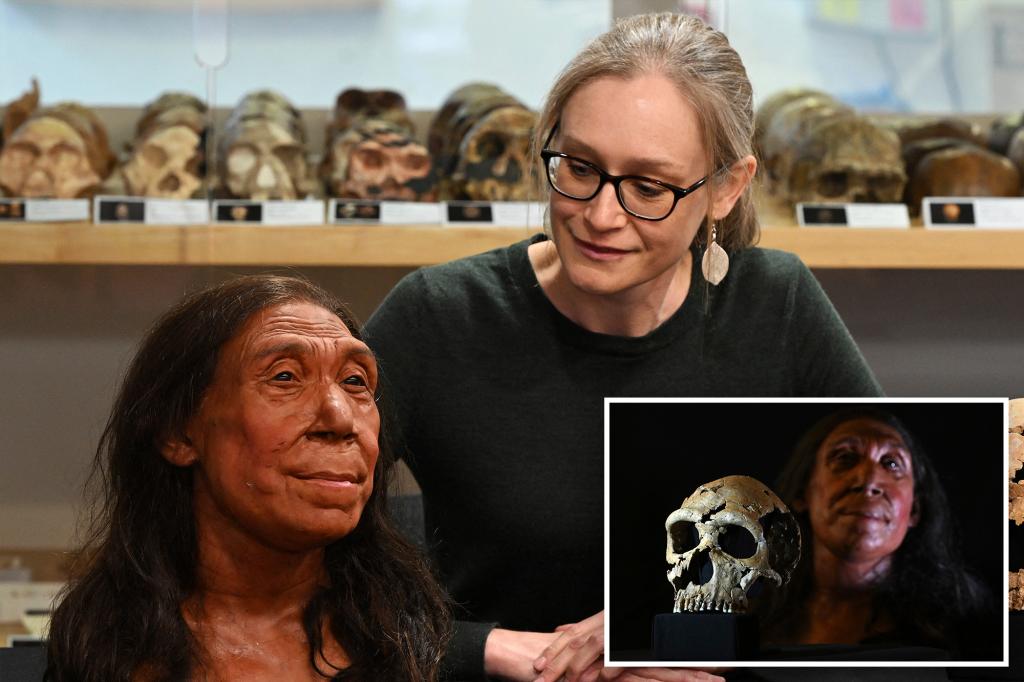A team of scientists in England reconstructed the face of a 75,000-year-old Neanderthal woman, known as Shanidar Z, revealing that Neanderthals likely looked more similar to humans than previously thought. The archaeologists at the University of Cambridge pieced together 200 parts of the cave woman’s skull to recreate her facial features, highlighting her less prominent eyebrow line, stronger chin, and smaller nose compared to typical Neanderthal characteristics. This reconstruction offers a softer and more human-like appearance, shedding light on how humans may have procreated with Neanderthals.
The reconstructed face of Shanidar Z features a soft grin and well-defined cheekbones, making it easier to understand how interbreeding occurred between Neanderthals and humans. The face suggests that the differences between the two species were not as stark as previously believed, leading to the possibility that most people alive today still have Neanderthal DNA. Shanidar Z, one of the best-preserved Neanderthal specimens found this century, was discovered with her face likely crushed by a rockslide in a cave in Iraq in 2018. Reconstruction involved piecing together over 200 fragments of her skull by hand, with each fragment delicately cleaned and stabilized to rebuild her entire face.
Neanderthals, who were shorter and stockier than humans, had large noses that were useful for warming and humidifying cold air in the regions where they lived. They and anatomically modern humans coexisted in the same geographic area for approximately 30,000 years following human migration out of Africa. During this time, there was evidence of interbreeding between Neanderthals and humans, leading to the transmission of Neanderthal DNA to modern human populations. This suggests a complex and interconnected history between Neanderthals and humans.
The process of reconstructing Shanidar Z’s face involved meticulous attention to detail and patience. Archeologist Lucía López-Polín meticulously pieced together each fragment of her skull, taking over a fortnight to process a single block. The fragility of the bone required gentle cleaning and stabilization, akin to treating bone as soft as a biscuit dunked in tea. The reconstruction process was described as a high-stakes 3D jigsaw puzzle, highlighting the dedication and expertise required to bring Shanidar Z’s face back to life.
The findings of the reconstruction challenge previous assumptions about Neanderthals and their appearance, showcasing a more human-like and relatable face than previously depicted. The softer features of Shanidar Z provide a glimpse into the genetic connections between Neanderthals and humans, with the possibility that interbreeding was more common than initially thought. The delicate process of rebuilding her face sheds light on the complexities of archaeological reconstruction and the importance of understanding our shared history with other hominid species. This work represents a significant step in bridging the gap between Neanderthals and modern humans, offering a more comprehensive and compassionate view of our ancient relatives.













